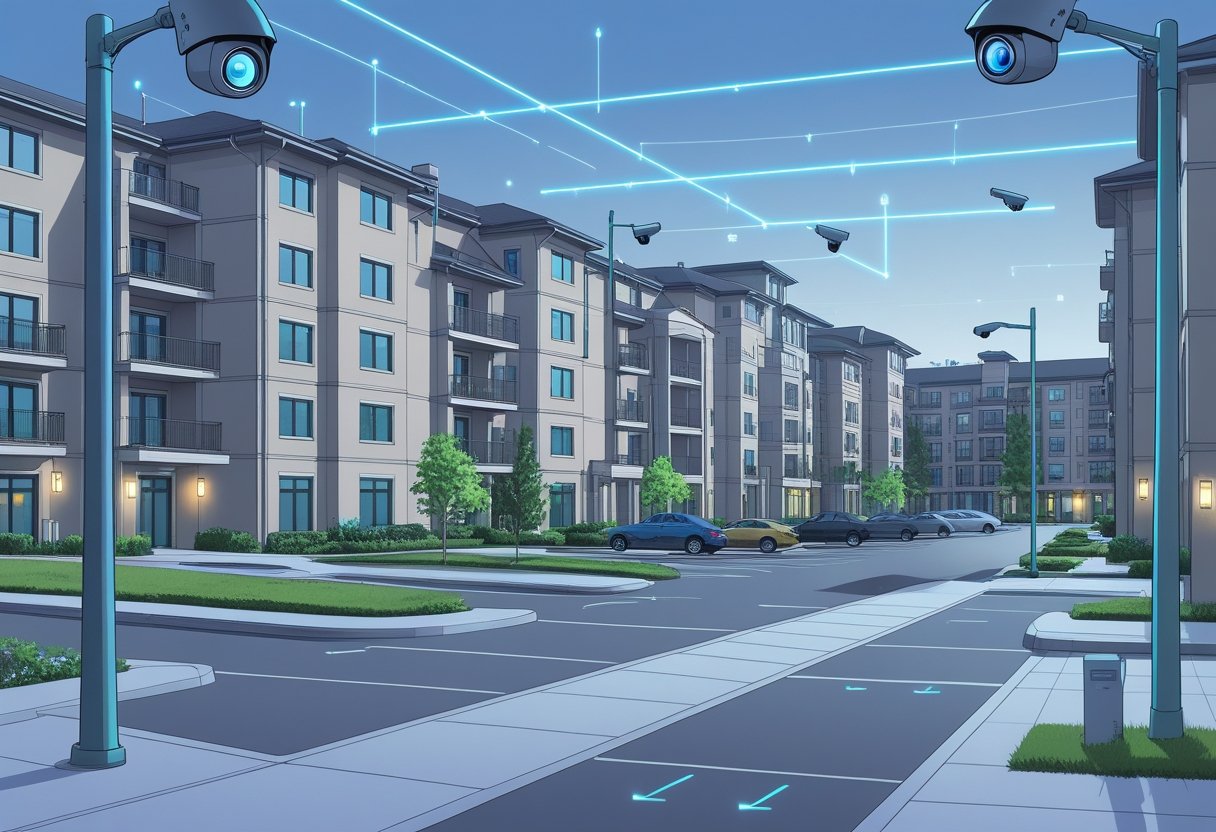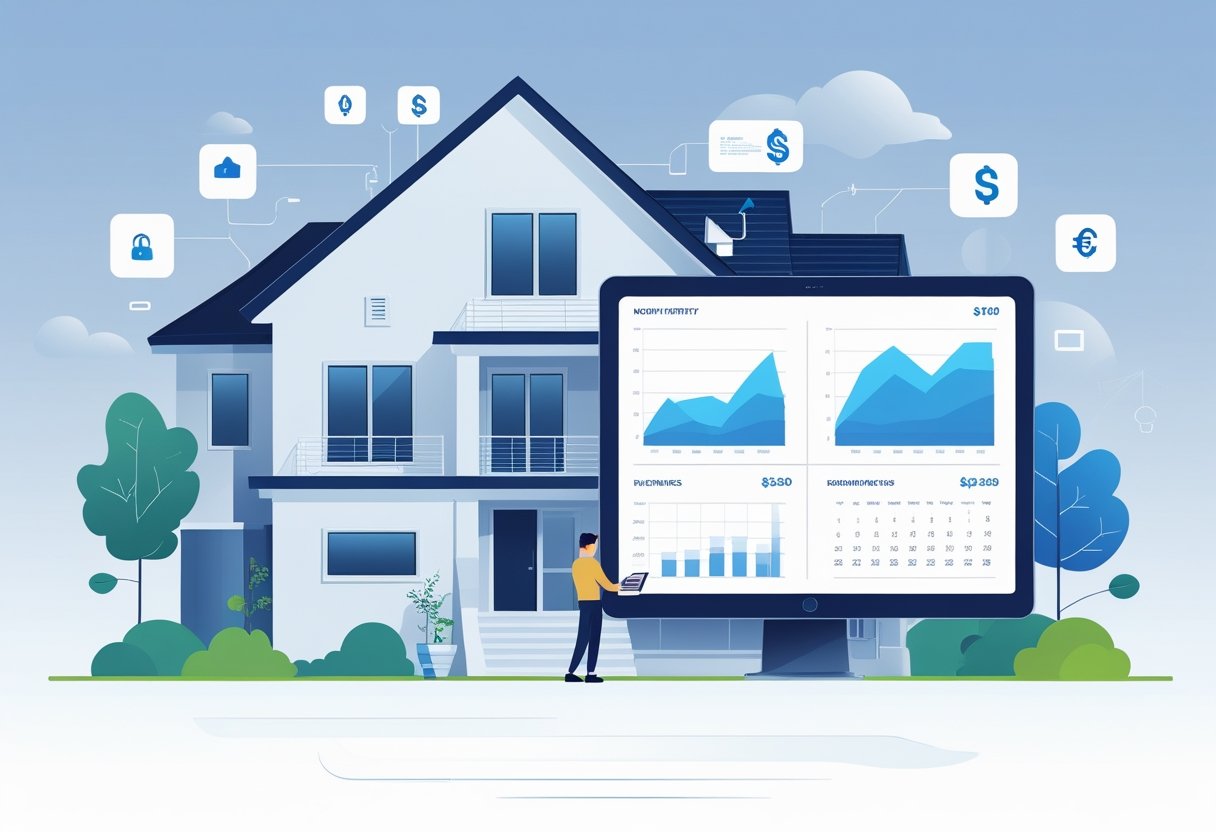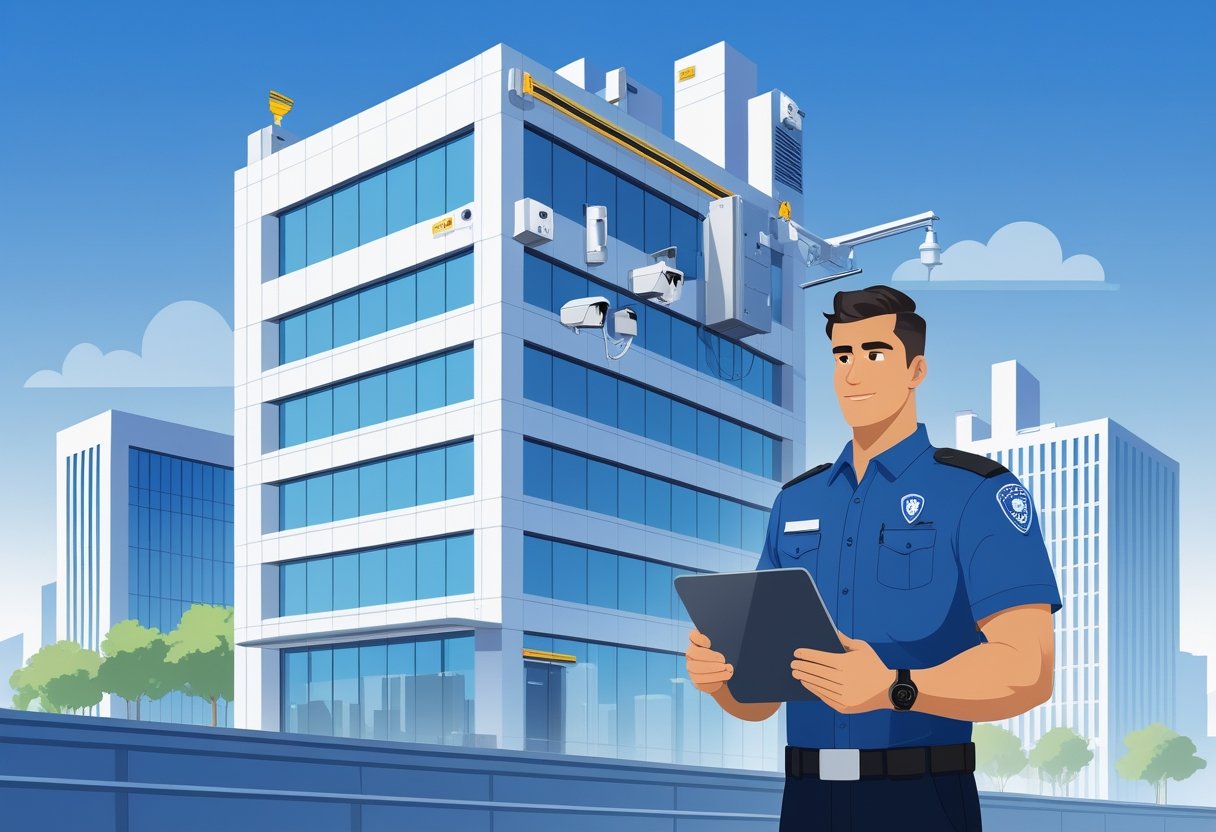In today’s urban environment, ensuring the safety of multi-family residential properties is paramount. As a property manager or resident, you face unique security challenges that require effective solutions. Multi-family residential video monitoring provides real-time surveillance that enhances security, deters crime, and ensures a safer living environment for all residents.
Investing in advanced video monitoring systems not only protects against potential threats but also offers peace of mind. You can monitor entrances, common areas, and surroundings 24/7, allowing for immediate responses to incidents. This proactive approach minimizes liability and reduces the risk of property damage.
For those in the greater Houston area, embracing video surveillance tailored for multi-family residences can transform your property management strategy. With AI-powered detection and remote access capabilities, you can stay ahead of security challenges and foster a community that values safety and well-being.
Understanding Multi-Family Residential Video Monitoring
Multi-family residential video monitoring is an essential tool for enhancing security and ensuring the safety of tenants. It combines technology with effective management strategies to create a secure living environment.
Definition and Core Concepts
Multi-family residential video monitoring refers to the use of surveillance systems to oversee common areas and entry points in apartment buildings and complexes. This system typically includes cameras, digital recording capabilities, and real-time monitoring services.
Cameras are strategically placed to cover high-traffic areas such as hallways, lobbies, parking lots, and entrances. Using cloud storage allows for easier access to recorded footage and efficient retrieval when incidents arise.
The core concept of this monitoring is to provide continuous oversight and quick responses to potential security threats. Many systems utilize artificial intelligence to enhance pattern recognition, automatically flagging unusual activities.
How Video Monitoring Differs from Traditional Surveillance
Video monitoring significantly differs from traditional surveillance in its proactive approach. While traditional systems often rely on passive recording, modern video monitoring facilitates real-time data analysis and immediate alerts.
This integrated approach allows for the detection of suspicious activities as they happen, enabling rapid intervention when necessary. Additionally, video monitoring systems are often connected to mobile applications, allowing property managers and security personnel to monitor feeds remotely.
Enhanced features include motion detection, night vision, and remote access, which traditional systems typically lack. This shift from reactive to proactive surveillance marks a major advancement in safeguarding multi-family properties.
Role of Property Managers in Security Operations
Property managers play a crucial role in the effective implementation of video monitoring systems. Their responsibilities include overseeing the installation of the surveillance equipment, ensuring the technology meets the specific needs of the property and residents.
Additionally, property managers develop protocols for responding to incidents captured on video. Training staff on how to use the video monitoring systems efficiently is also essential.
Regular assessments of the monitoring system help address any issues and improve coverage. Property managers are the link between residents and the security technology that enhances safety, making their role invaluable in maintaining a secure living environment.
Key Components of a Multi-Family Video Surveillance System
A comprehensive video surveillance system for multi-family properties consists of several critical components. These elements work together to enhance security, improve monitoring, and ensure safety for residents and visitors alike. Understanding these components will help you make informed decisions for effective security management.
Types of Security Cameras for Multi-Family Properties
Choosing the right security cameras is essential for effective monitoring. A variety of options are available, including:
- Dome Cameras: These are discreet and often used for indoor spaces. Their design makes them less noticeable, deterring unwanted behavior.
- Bullet Cameras: Built for outdoor use, these cameras have a more visible presence and typically offer longer-range visibility.
- PTZ Cameras: Pan-Tilt-Zoom (PTZ) cameras allow for remote adjustment of the camera's angle and zoom level, providing flexible coverage of large areas.
For multi-family settings, integrating high-definition (HD) cameras ensures clear video quality. Features such as night vision or infrared capabilities enhance performance in low-light conditions. These cameras are critical for capturing clear evidence in case of incidents.
AI Technology and Intelligent Analytics
AI technology is revolutionizing security systems by offering advanced analytics capabilities. This technology enables:
- Motion Detection: AI can intelligently identify movement within a designated area, triggering alerts only for significant activities.
- Facial Recognition: Some systems can recognize residents and authorized visitors, enhancing entry monitoring while reducing false alarms.
- Behavior Analysis: AI can analyze activities and detect unusual behavior patterns, allowing for proactive responses to potential threats.
These intelligent features can provide real-time alerts, ensuring quick responses to incidents. By leveraging AI, you can enhance the effectiveness of your video surveillance system.
Access Control Integration
Integrating access control systems with video surveillance provides layered security. This integration typically includes:
- Key Card and Fob Access: Residents can use key cards or fobs to enter buildings or restricted areas, which can be monitored via security cameras.
- Visitor Management: Systems can log and monitor visitor entries, ensuring that only authorized individuals access the property.
- Remote Access: Property managers can remotely manage entry points and view real-time footage from anywhere, enhancing overall security oversight.
With access control integration, you benefit from a comprehensive view of who enters and exits the property, fostering a safer environment for all.
Mobile Surveillance Units and Remote Access
Mobile surveillance units are crucial for multi-family properties, especially during construction or special events. These units offer flexible placement and can be quickly deployed for enhanced coverage.
- Remote Monitoring: With mobile surveillance, you can monitor activities in real-time from your mobile device or laptop. This capability allows for immediate responses to incidents.
- Real-Time Alerts: Notifications trigger when motion is detected, ensuring you stay informed about potential security breaches.
Such features empower you to maintain a secure environment while providing peace of mind to residents. Employing mobile units effectively extends surveillance coverage, adapting to your specific needs.
Proactive Security Solutions and Benefits
Implementing proactive video monitoring in multi-family residences enhances security while offering numerous benefits tailored to resident safety and property protection. This innovative approach reduces crime rates and increases accountability, ensuring a secure living environment.
Resident Safety and Property Protection
Your residents' safety is paramount. Proactive video monitoring provides real-time surveillance, allowing immediate responses to incidents. This continuous oversight deters potential threats, reducing the likelihood of crime occurring on your property.
Incorporating advanced security solutions enables you to monitor common areas and access points effectively. The presence of visible cameras can reassure residents, making them feel safer and more secure. A well-protected environment fosters a sense of community and stability.
Additionally, video records can assist in swiftly addressing any safety concerns. These recordings serve as a critical tool for resolving disputes and ensuring all parties are held accountable.
Crime Prevention and Deterrence
Proactive video monitoring acts as a powerful deterrent to criminal activity. When potential intruders see surveillance equipment, they are less likely to attempt vandalism, theft, or other illegal actions.
Implementing multi-family residential security solutions can significantly reduce incidents of loitering, drug use, and violence in communal areas. By investing in robust security measures, you demonstrate a commitment to maintaining a safe environment.
Moreover, integrating AI technology can enhance these systems. Intelligent monitoring can identify suspicious behavior and alert authorities before a crime occurs, further preventing potential threats and ensuring a timely response.
Liability Protection and Incident Documentation
Liability protection is crucial in multi-family residential management. Proactive video monitoring helps document incidents that may otherwise result in legal disputes or false claims.
Having detailed video evidence can safeguard you against unwarranted accusations and claims of negligence. This documentation is invaluable during investigations, as it provides factual accounts of events.
Furthermore, a comprehensive security solution not only protects your residents but also your investment. By reducing incidents, you lower your risk exposure and potentially decrease insurance premiums. Investing in advanced monitoring systems equips you with tools to mitigate risks effectively, ensuring compliance with safety regulations.
Common Security Challenges for Multi-Family Properties
Managing security in multi-family properties presents various challenges. Each issue requires careful attention to ensure resident safety and property protection. Key security concerns include unauthorized access, package theft, surveillance of parking areas, and issues related to loitering and vandalism.
Unauthorized Access and Tailgating
Unauthorized access is a significant concern in multi-family properties. With multiple entry points and shared spaces, it is important to implement effective strategies to prevent such breaches. Access control systems can restrict entry to authorized residents only.
Utilizing video surveillance at entrances adds an additional layer of security. Security cameras help monitor who enters the premises and can deter potential intruders. Incorporating live video monitoring allows for real-time response to any unauthorized access attempts.
Encouraging residents to report any suspicious behavior further enhances security. Proper communication about maintaining security protocols, such as not allowing others to "tailgate" through entry doors, is vital.
Package Theft and Mailroom Security
Package theft has become a growing issue for multi-family properties, especially with the increase in online shopping. Thieves often target mailrooms or delivery areas that lack monitoring.
Implementing secure package delivery systems can mitigate this risk. Investing in video surveillance in mailrooms and package areas provides constant oversight. Cameras can record activities and help identify thieves if theft occurs.
Some properties have adopted secure package lockers that require codes or app verification for access. This not only protects deliveries but also enhances resident confidence in the property's security.
Parking Lot and Vehicle Surveillance
Parking lots in multi-family residences are often targets for vandalism and theft. Ensuring the safety of vehicles requires comprehensive monitoring solutions.
Security cameras placed strategically in parking areas can deter criminal activity. These cameras allow for the documentation of any suspicious events and can assist in investigations.
Integrating lighting with video surveillance enhances visibility during night hours, further discouraging potential crime. Regular monitoring of footage can also help identify patterns and address recurring issues in the parking area.
Loitering, Vandalism, and After-Hours Risks
Loitering can lead to vandalism and other safety concerns in common areas of multi-family properties. Identifying these behaviors early is crucial for property management.
Utilizing live video monitoring can help address these issues. Real-time surveillance allows for prompt action if individuals are loitering after hours or engaging in undesirable activities.
Regular patrols, coupled with electronic monitoring, can effectively reduce vandalism rates. Engaging residents to keep an eye on common areas fosters a sense of community and personal responsibility for safety.
Choosing and Maintaining the Right Video Monitoring Solution
Effective video monitoring begins with a tailored approach that addresses the specific needs of multi-family residential properties. Each aspect, from security assessments to regular maintenance, plays a crucial role in ensuring optimal performance and protection.
Security Assessment and Risk Analysis
Conducting a thorough security assessment is essential for identifying vulnerabilities within your property. Consider engaging a professional to evaluate common entry points, areas lacking visibility, and potential security gaps.
Key factors to assess:
- Location of security cameras
- Lighting conditions
- Proximity to emergency services
By analyzing these elements, you can develop a tailored video monitoring strategy. Additionally, a risk analysis helps prioritize the most critical areas and ensures resources are allocated where they will be most effective.
Scalability and Customization for Property Needs
As a property manager, you must consider how your video monitoring solution can grow with your community. Choose a system that offers scalability to adapt to future needs, whether adding new cameras or integrating advanced features.
Customization options include:
- Camera types (fixed, PTZ, etc.)
- Integration with access control systems
- AI-assisted analytics for automated alerts
Opting for a customizable solution means you can tailor it to your specific security requirements while enhancing the overall safety of your residents.
System Maintenance and Regular Upgrades
Regular maintenance is crucial to ensure your video monitoring system operates smoothly. Schedule routine inspections to check camera functionality, data storage capacity, and system updates.
Consider including:
- Monthly performance reviews
- Bi-annual upgrades of software and hardware
- Training sessions for staff on effective system usage
By prioritizing maintenance and updates, you can optimize the longevity and effectiveness of your security measures. Keeping your system current also helps safeguard against emerging security threats, ensuring your residents remain protected at all times.
Frequently Asked Questions
This section addresses common inquiries regarding video monitoring for multi-family residences. The focus is on practical aspects, legal considerations, and integration with existing security systems within your property.
What are the optimal security camera placements for apartment buildings?
Positioning cameras strategically is crucial. Place them at building entrances, parking areas, and common spaces. Ensure that high-traffic areas are covered to deter unauthorized access and enhance visibility.
How do security needs differ between single-family and multi-family residential properties?
Multi-family properties require monitoring of shared spaces like lobbies and hallways. Single-family homes often focus on perimeter security. The complexity of shared environments in multi-family residences necessitates a comprehensive approach to surveillance.
Can tenants legally install their own video surveillance in multi-family residences?
Tenants typically cannot install their own surveillance cameras without permission. It is important to consult your lease agreement and local laws, as regulations can vary significantly.
What features should be considered when selecting a video monitoring system for an apartment complex?
Look for systems with real-time monitoring, remote access, and cloud storage capabilities. Features like motion detection and night vision can enhance security by providing comprehensive coverage of the property.
How does video monitoring integrate with other security systems in multi-family residential environments?
Video monitoring can work alongside access control systems and alarm systems. An integrated approach allows for comprehensive security management, ensuring that all systems communicate effectively for real-time threat detection.
What privacy concerns should be addressed when implementing video surveillance in multi-family housing?
Addressing privacy concerns is essential. Inform residents about where cameras are installed and the purpose of surveillance. Compliance with local laws regarding video monitoring can help maintain trust among tenants.








